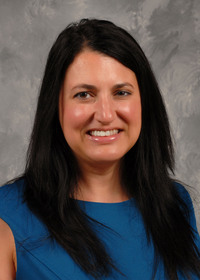Information Possibly Outdated
The information presented on this page was originally released on October 16, 2000. It may not be outdated, but please search our site for more current information. If you plan to quote or reference this information in a publication, please check with the Extension specialist or author before proceeding.
Managing Urban Growth Can Challenge Rural Areas
MISSISSIPPI STATE -- The South is the nation's fastest growing area, which means Southerners face urban growth issues more often than do communities elsewhere.
Lori Garkovich, professor of rural sociology at the University of Kentucky, said whether urban growth is viewed as positive or negative depends on the individual. In a report published by the Southern Rural Development Center headquartered at Mississippi State University, Garkovich said issues surrounding such growth can tear a community apart or galvanize it into action.
"People who feel that growth equals new economic opportunities, improved infrastructure and enhanced quality of life call it growth," Garkovich said. "Those who see overcrowded streets and schools, dramatic changes in the community's visual landscape and an over-taxed infrastructure call it sprawl."
From 1970 to 1990, urban land area increased by 60 percent, but 98 percent of the United States is considered non-urban. Much of this land is contained in public land such as public forests, grazing land and parks, and some of the land is not suitable for urban development. This includes mountain areas or those with drainage problems.
The South is the most developed part of the country, containing nearly 41 percent of this land, and urban areas also are growing fastest in the South.
"Southern communities, both rural and those on the urban edge, increasingly must deal with questions of growth and sprawl," Garkovich said. "The size of the growth is not as important as the scale of it. You feel growth more in a small community and your local capacity for services is impacted more."
A major question growing communities face is how to manage growth. Garkovich said a key to the process is developing a capital improvements plan, an orderly plan of when to offer and how to fund expanded municipal services. Other ways are through zoning and the efficient use of land where city services are already available.
"Cities can encourage downtown revitalization and offer incentives for redevelopment of open urban spaces," Garkovich said.
The South has some of the finest agricultural land in the world, and perfect conditions for agricultural production. Garkovich said these same conditions make the land perfect for residential and commercial uses as well, so the question must be asked about how much land is necessary for agricultural production.
"Land use decisions are (basic) political decisions that need to have at least some measure of government approval," Garkovich said. "These decisions are political because they are about people's fundamental rights as Americans, and they affect our sense of community. We've historically struggled with the public good versus individual rights."
Residents define the nature of their community through land use. To be able to control how their land will be used, communities must have the political will to make the tough choices and the willingness to find common ground on decisions related to development and land use.
"Probably every community that is to remain viable economically and culturally has to have some measure of growth," Garkovich said. "There are as many serious problems with decline as there are with growth."
Garkovich's full report, "Land use at the edge: The challenges of urban growth for the South," can be obtained by calling the Center at (662) 325-3207.
Contact: Dr. Lori Garkovich, (859) 257-7581





